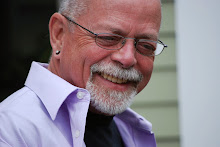Friday, May 13, 2011
More on the hours when everything changed and how that began
Around 2:00 AM, on June 28, 1969, the crowd in front of the Stonewall became a mob. They threw things at the cops and at the Stonewall—rocks, paving stones, bricks, empty cans, glass, full cans, trash can lids. There were only ten cops now, facing a mob of five or six hundred very angry men, and gradually the cops retreated toward the door of the Stonewall Inn. Gay people followed them closely, throwing rocks and breaking all the windows facing on Christopher Street. Four gay men managed to pull up a parking meter to use as a battering ram against the Stonewall’s main door. Inside, the cops heard the screams of the mob and the shuddering thuds of the parking meter driven into the door. Now the cops trapped inside realized that the enraged gay people on the other side of the door were trying to burn the building down. They were using lighter fluid at first, and then they were trying some kind of fuel—those inside the Stonewall didn’t know which kind—in bottles that they tossed inside whenever the cops tried to open the door. The police didn’t have enough gunpower to defeat 600 men. They had visions of being burned alive or of being battered to death by a mob that vastly outnumbered them.
The cops were led by Deputy Inspector Seymour Pine. During World War II, Lt Pine had written the US Army manual on hand-to-hand combat (p. 101) and said later of the riots that he had never been as scared in his life (p. 160). Danny Garvin, one of the rioters, said, “It was like a war” (p. 171). Out in Sheridan Square, the rioters weren’t led by anybody. They were the street people, homeless, transsexual, and transgender kids, and they were also what David Carter calls, “conventionally masculine men” (p. 192)—political agitators, troublemakers, and students. They were not the gay people Lt. Pine usually confronted who were so frightened of being exposed as gay people that the cops could do whatever they wanted with them. These gay people were way out, way sick of the way the cops treated them—why were they raiding their bar twice in one week, when everyone knew the cops were paid off? They were determined to terrorize Lt. Pine and his men. Michael Fader, one of the rioters said, “We felt we had freedom at last….The bottom line was, we weren’t going to go away. And we didn’t” (p. 160).
What happened at Stonewall is that gay people, who had never before been demanding and who had always been meek, suddenly turned nasty. Just about all of gay liberation came out of their determination to try to hurt the cops. Before there was a theory of gay liberation, or a gay political movement, there were men in the street fighting cops to be free.
This account was based on David Carter's Stonewall, St Martins Griffin, New York, 2004. Page numbers in parentheses are to this edition.
See also my novel, Adam in the Morning, about the six nights of the Stonewall Riots. See the Stonewall Triptych for a full presentation of Adam in the Morning.
The cops were led by Deputy Inspector Seymour Pine. During World War II, Lt Pine had written the US Army manual on hand-to-hand combat (p. 101) and said later of the riots that he had never been as scared in his life (p. 160). Danny Garvin, one of the rioters, said, “It was like a war” (p. 171). Out in Sheridan Square, the rioters weren’t led by anybody. They were the street people, homeless, transsexual, and transgender kids, and they were also what David Carter calls, “conventionally masculine men” (p. 192)—political agitators, troublemakers, and students. They were not the gay people Lt. Pine usually confronted who were so frightened of being exposed as gay people that the cops could do whatever they wanted with them. These gay people were way out, way sick of the way the cops treated them—why were they raiding their bar twice in one week, when everyone knew the cops were paid off? They were determined to terrorize Lt. Pine and his men. Michael Fader, one of the rioters said, “We felt we had freedom at last….The bottom line was, we weren’t going to go away. And we didn’t” (p. 160).
What happened at Stonewall is that gay people, who had never before been demanding and who had always been meek, suddenly turned nasty. Just about all of gay liberation came out of their determination to try to hurt the cops. Before there was a theory of gay liberation, or a gay political movement, there were men in the street fighting cops to be free.
This account was based on David Carter's Stonewall, St Martins Griffin, New York, 2004. Page numbers in parentheses are to this edition.
See also my novel, Adam in the Morning, about the six nights of the Stonewall Riots. See the Stonewall Triptych for a full presentation of Adam in the Morning.

0 comments:
Post a Comment